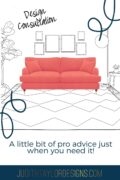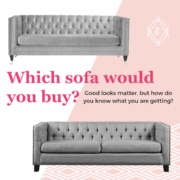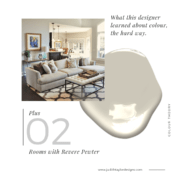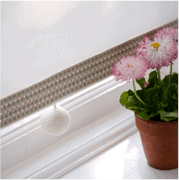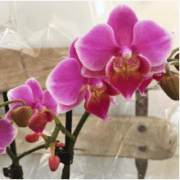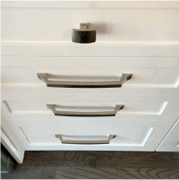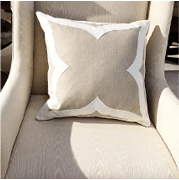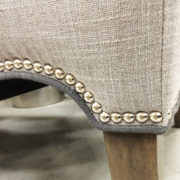With so many people turning to the internet for their purchasing, I thought it time for another post about what to look for.
What you need to know about shopping for a quality sofa
First off, let me say this about internet shopping. It’s a great place to look for back to school clothes for your kids if you know their exact size, but a very poor place to buy furniture. There is so little information to be gleaned from the internet listing when it comes to furniture, and specifically a quality sofa, I always advise purchasing right from the source. A local furniture manufacturer, where you can sit on a piece and feel the quality and the comfort is where to look. Many of the better furniture manufacturers sell only through designers. That was the tradition in my grandfathers day and still holds true today. Our family heritage is one of quality manufacturing and there are lessons to be learned, but typically manufacturers don’t have the sales force to sell to individual homeowners and rely on reputable retail showrooms and designers to fill that role.
There was a great exposé written quite a while back when a crew of carpenters at the center for Furniture Craftmanship took a chain-saw to several furniture pieces from popular retail stores and it was a real eye-opener for consumers. In case you missed it, you can read the article here. The gist of it is, well, when shopping for pottery, look at Pottery Barn. For furniture, stick to a reputable furniture manufacturer. The same holds true for the worst of the bunch, Restoration Hardware (read the bold truth here), and only consider West Elm…if you are looking for cool student- grade furniture! Don’t get me wrong here, those retailers are terrific for accents and accessories. Designers love them for that! For quality furniture, stick to the furniture-makers.
Let’s dive in to some of the key aspects of furniture construction so you can be better informed.
Terms
The first term I want you to get familiar with is “bench-made” if you want quality. The best way to remember what this term means is to picture a carpenter’s bench and compare that mental image to an image of an assembly line. Bench-made furniture making refers to a manufacturing process where a person or small team work on one piece of furniture at a time on a table or carpenters bench, and complete it to specific specifications. It is the best of individual attention. Here’s how others define the term bench-made.
Most pieces made off-shore are made in a factory setting where they are mass produced. There is certainly a cost saving to assembly line manufacturing. Each person focuses on one task and applies that focus to each piece that comes along the assembly line. What is missed, is one person who oversees the entire piece to ensure quality, adherence to specifications, attention to detail etc. etc. There are trade-offs in each scenario.

The biggest problem with furniture made off-shore is that it is not made for our environment, and according to our industry standards. Joints where to components come together may be made with adhesives that don’t stand up to our cold dry winters, and hot humid (and air conditioned) summers. The same holds true for wood species. Furniture made from wood indigenous to a hot humid climate is just not made to withstand our climate variations.
The frame
Look for the description “kiln-dried” hardwood. That tells you that the frame is made from a suitable species of wood (i.e. hardwood, typically alder or poplar) and that it has been properly dried to remove any excess moisture. The process of kiln drying is done to ensure the frame is made from lumber that will not warp after the frame has been made. This is essential in North American homes where furniture is subject to a range of climactic extremes that some Asian countries do not experience. With hot humid summers contrasted with dry cold winters, and in some regions the need for central heating and air-conditioning, furniture needs to be stabilized to endure those changes.
Although many people think that engineered hardwood is an inferior option, it is not. Engineered wood used for frames, is a type of plywood and it consists of layers – the best plywood consist of seven to nine layers. The advantage of these layers, when made properly, is that that grain of the wood is alternated between each ply or layer thus giving a more stable product. Internal movement from the grain of one layer is stabilized by off-setting pressure from the layer next to it. This can be trickier to determine but be sure that “engineered wood” specified by the manufacturer does not mean medium density fibreboard (MDF), particle board (an inferior product not suitable for furniture construction), or inexpensive plywood meant for general construction.
Joints
Joints can be the most vulnerable points but when well-made should provide a stable product. Look for joints that employ more than one form of attachment. Screws (or staples) should be augmented by glue, mortise and tenon or biscuits also are held in place with glue. Again, adhesives used by a North American manufacturer will be selected for use in our environment. Well-made pieces are glued, doweled, and screwed for maximal stability.
Corner blocks need to be reinforced for stability. More can be found about joinery and in my post so you want to buy a sofa.

The seat-bed
Webbing generally provides a base for the seat cushions. Polypropylene is used in inexpensive contemporary sofas that don’t provide depth for inner coils to give ample comfort. Polypropylene, however, will stand up better than jute over the years when used together with a proper coil system will last. Jute, thought to be superior, can also be prone to sagging. Make sure if your seat bed is made from jute that it is heavy grade – at least 11 lbs (per 144 yards).
The suspension
This is where many manufacturers have opportunity to make or break the piece (literally). There are really two types of suspension systems. The purpose is to provide that springy extra bounce that offers the sitter a feeling of comfort and luxury. Some modern sofas offer a sleek look with a shallow seat bed that offers no suspension beyond a webbed base, but do so at the cost of comfort.
Options to look for
Sinuous or “S” – coils
Sinuous springs are “S” shaped and run from the front to the back of the seat bed, and are tied laterally. This type of seat bed construction is good for an entry-priced sofa. There is good savings here because the labour to construct a seat-bed with sinuous coils is much simpler and less costly. Make sure, if you are buying a sofa with sinuous coil construction that they are placed close together and made from high gauge coils.
They can work well at a slightly lower price-point for lighter use sofas, but if you have kids that like to jump, or any other heavy use the savings isn’t worth it when the seat-bed collapses.
Here is an example of what can happen when the coils pull apart (keep in mind this is an extreme case).

Here’s what’s really going on (below). The homeowner sat in the same place all the time and the frame was not suited to comfortably support his size. The seat bed was simply not up to the task, and it “bottomed out” after repeated use. Remember, sinuous coils are a good option for light use areas. A formal living room that gets used on occasion would be a more appropriate place for this than your main tv watching sofa where everyone has their favourite place to sit.

Eight-way hand tied
This is the “gold standard” to look for. Exactly as it sounds. coils, clipped to the seat bed are tied in all directions (front to back, side to side, and diagonally both ways) for stability in all directions. The sitter is supported on a bed of coils that move together as a unit but spring individually offering comfort and support where it is needed.

Drop in coil bed
A less labor-intensive spring suspension version consists of coils that are mounted on a metal frame, and constructed as a stand-alone unit. A complete unit is dropped into the furniture piece as a single component. These can be mass-produced giving the option of a hybrid version offering the comfort and strength of 8-way tied coils and the cost savings of assembly production. The lower labor costs comes with some compromises, however. The drop-in coil spring system is screwed into the sides of the frame and is not supported on the bottom by the usual support provided for traditional 8-way so it may start to sag sooner. Also, there is more metal to metal contact with this option, which has lead to complaints of squeaking.
Another way that consumers can be fooled, some manufacturers will use additional strings to drop-in coil systems giving the impression that it is a hand-tied seat bed, fooling many consumers.
Other options
GRID/FLEXOLATOR
This is best pictured like a trampoline bed with a canvas or fabric suspended from the frame by springs. You may find this type of suspension in lower priced sofas best for very light use only.
STRAPS/WEBBING
The last type of suspension you will sometimes find on a sofa or upholstered chair is made by weaving fabric or elastic straps in a grid-like pattern. This is most often seen in very modern styles where a narrow seat deck is part of the aesthetic. It allows the piece to float on taller legs and have a less bulky appearance at the loss of having the comfort of any springs at all.
The cushions
When it comes to seat and back cushions, there are options. My top-of-the-line showroom has what I like to call the Goldilocks display. A sofa with four different types of cushions for both seat-bed, and seat back to provide a range of options for firmness. Good seat cushions are typically made from high density foam, can be wrapped in Dacron or a feather/down envelope for a very luxurious seat. Some manufacturers also offer cushions with individually wrapped inner coils for extra spring in the seat. Look for seat cushions that are fully upholstered on the front and back so you can reverse them to hide stains if they should occur for maximal use. Flip them regularly for even wear.
The fabric
Professionally graded fabrics should be clearly labelled with all the testing that has been done as as well as cleaning instructions. Like I said at the top of the post, you can’t judge a book by its cover, but a sofa should have a good cover that will stand up to real life and your families needs. Do you need stain resistance, a texture or pattern that will hide soiling and staining, for example. We have written before about pet friendly design, and family friendly upholstery. In brief, look for an indication of testing for abrasion and resistance to wear and pilling, stain and soil resistance, fading from sun damage, and many other qualities to know your sofa will stand up to your families usage.

Some things to look for
If you are looking for new furniture, head out armed with some knowledge about what to look for. Our advice is put your hands on and seat in any furniture you are considering.
- Feel the heft of a piece. Does it feel substantial?
- Grab the back of a sofa. Does it feel substantial? Is there sufficient padding? Is it attractively finished so it can float in the room and look good from all angles?
- Pick up a sofa by one end. Does it torque (twist on the frame)?
- Push outward on the arms. Are they solid?
- Does the piece wobble or feel flimsy in any way?
- Are the legs solidly attached? Depending on the style, top quality pieces the legs are integral to the frame, not screwed on as an afterthought.
- Self-decking is used in better-made pieces. Lift the seat cushions to see if the manufacturer has cut corners and used a less-expensive fabric in places that don’t show.
- What type of seat-bed and springs are used?
- What type of wood is used in the construction?
- Pay attention to the tailoring. Patterns should match in a pleasing way and flow across the piece, fabric should be smooth and welting along the cushion edges straight with barely perceptible seaming.
- Are the cushions sewn with zippers for easy cleaning and to top up or replace the filling?
- What are the seat and back cushions filled with?
- Are all of the cushions reversible to hide wear or discoloration?
- What are the specifications on the fabric used for the upholstery? What are the cleaning instructions?
For more reading, the New York Times had a great piece about how to recognize a quality sofa. When looking for a new piece, we recommend a thorough inspection before buying. A true craftsman cares about each piece, and that attention will be evident.
Need help choosing a sofa? Give us a call.









